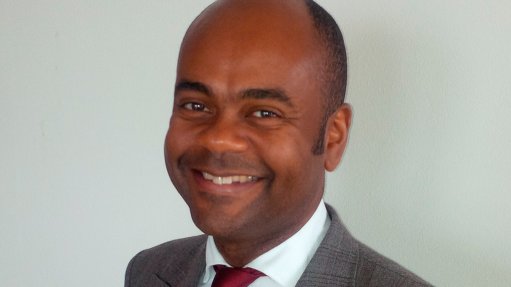
FABRICE NZÈ-BÈKALÈ Gabon’s soil contains large amounts of phosphate, which will be mined to allow for the establishment of an integrated fertiliser production industry
Gabon and Morocco signed two major agreements in March to develop their respective natural resources and increase the industrialisation of both countries’ economies.
The first agreement is between Gabon’s State-owned mining company, Société Équatoriale des Mines (SEM), and Morocco’s State-owned phosphate group, Office Chérien des Phosphates (OCP Group). The agreement, which has an estimated value of $2.3-billion, stipulates that OCP Group will provide technical and scientific assistance for the development of an industrial fertiliser plant in the City of Port-Gentil, in Gabon.
SEM CEO Fabrice Nzé-Békalé tells Mining Weekly that the plant is scheduled to be commissioned by the end of 2018.
Moreover, he notes that Morocco’s large phosphate resources are exploited exclusively by the OCP Group, which is the “global leader in the extraction and processing of such ore”.
Nzé-Békalé points out that Gabon’s soil also contains large amounts of phosphate, which will be mined to allow for the establishment of an integrated fertiliser production industry.
“It is a strategic sector in Africa, owing to the continent’s need to expand its agricultural pro-duction capacity”.
He notes that the country’s Mabounié car-bonatite alkaline complex, located 200 km south-east of Libreville, in the province of Moyen-Ogooué, contains magmatogenic phosphates.
Nzé-Békalé adds that the Mabounié complex contains about 140-million tonnes of proven phosphate resources, with 24% phosphorus pentoxide and metal niobium resources that are estimated at about three-million tons, with an average grade of 1.3% niobium pentoxide.
He highlights that the project for the exploitation of the deposit is operated by French mining company Eramet, adding that the Ngoutou alkaline complex, which is located in the east of Gabon, has similar characteristics to those of the Mabounié complex.
Nzé-Békalé states that sedimentary phos-phates have been located along Gabon’s Atlantic coast, about 300 km north of Sette Kama.
“These phosphates are contained in rocks comprising marlstone and boulder clay.”
He highlights that the cooperation between Gabon and Morocco will range from the mining of industrial fertilisers to marketing, including the production of ammonia and phosphoric acid.
Mining Potential Acceleration
The second agreement, between Morocco’s State-owned National Office of Hydrocarbons and Mines (ONHYM) and SEM, resulted in the establishment of a scientific and technical training partnership.
Nzé-Békalé tells Mining Weekly that, amid the rapid development of mining activities in Gabon, SEM plans to use the ONHYM’s experience in managing mining and oil and gas projects.
According to oil firm British Petroleum’s 2010 ‘Statistical Review of World Energy’ report, Gabon has more than 30-billion cubic metres of proven natural gas resources.
“SEM, with the assistance of the ONHYM, is therefore fast-tracking the development of Gabon’s petrochemicals industry.”
Nzé-Békalé highlights that the practical cooperation aspects between SEM and the ONHYM include, but are not limited to, train-ing and the sharing of mining experience, particularly with regard to mining research, exploration techniques, information systems and database organisation, laboratory techniques, investment management and environmental management.